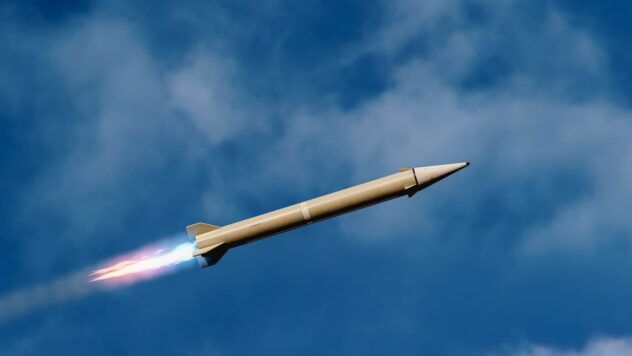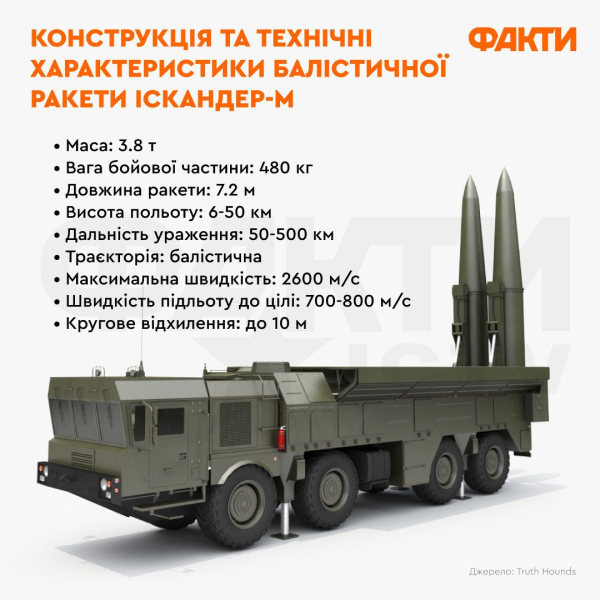
The aggressor state carries out missile attacks on Ukraine using Iskander-M ballistic missiles.
ICTV Facts learned the characteristics and design features of the Iskander-M ballistic missile.
Iskander-M: characteristics and trajectory of fall
The 9K720 Iskander missile system is designed to strike enemy targets located in operational depth and during tactical operations. This system was adopted by the Russian Federation in 2006. The launcher can accommodate two types of missiles: Iskander-M and Iskander-K.
Now watching
Unlike the Iskander-K cruise missile, the Iskander-M is a surface-to-surface ballistic missile. The missile's movement describes a parabola and can hit targets perpendicular to the ground . A solid-fuel rocket engine is built inside, which sets the speed and direction of movement.
The engine pushes the rocket to the top of the parabolic trajectory. As soon as it reaches the highest altitude, the engine is turned off and the rocket falls down. The fall is uncontrollable.
Why is Iskander-M difficult to shoot down?
The Iskander-M, which has a range of up to 500 km , is very difficult to spot due to its speed and approach angle. The speed of the ballistic variant is significantly higher than that of the cruise missile, so it is difficult to see with the naked eye. It is also equipped with electronic warfare systems that can jam and confuse air defense signals.
Iskander-M has no wings . This missile, unlike the winged version, is very quiet on approach, because the engine is no longer running. That is, it is difficult to hear the approach of this missile by sound.
The Iskander-M ballistic missile, which flies at speeds of up to 800 m/s , can remain undetected until it detonates.
These missiles are dark green in color and the body is divided into two parts. The nose of the missile is conical, but the back part resembles a cylinder. There are several tail stabilizers at the back.
It can be supplemented with a cluster warhead . The casing opens to release the submunitions inside. At the same time, the remains of the warhead, as well as the engine, continue to move by inertia and fall almost undamaged, because the warhead is released in the air.
An Iskander-M ballistic missile attack with a cluster munition was used on April 29 during the strike on Odessa and caused a large number of casualties.
Design and technical characteristics of the Iskander-M ballistic missile
The Iskander-M ballistic missile, which costs $3 million , falls to the ground almost perpendicularly, that is, at a right angle. As a result, a huge round crater is formed. The cruise missile, which is also launched from the Iskander complex, falls to the ground at an acute angle.
Technical characteristics of Iskander-M:
- Weight – 3.8 t
- Warhead weight: 480 kg
- The length of the rocket is 7.2 m.
- Flight altitude: 6-50 km
- The range of destruction is 50-500 km
- Ballistic flight trajectory
- Maximum flight speed – 2,600 m/s
- Approach speed to target is 700-800 m/s
- Circular error probable – up to 10 m

Iskander-M
Design features of Iskander-M:
- In the nose section there is a radio sensor that guides the missile.
- The warhead's automation is located inside the hull.
- In the middle of the rocket there is a place where the warhead and fuel parts are connected.
- The lower part contains the instrument compartment and the propulsion system.
- There are small trapezoidal tails at the bottom of the rocket.
Source: Truth Hounds, Defense Express

